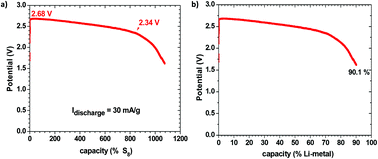-I will try answer from the articles I saw and interviews. But I will also send her the relevant questions of these anyway.
- It's indeed "glass" and not glass, and not. It's "glass" particles and not a single piece. She did a jelly roll version. It uses a liquid between the crystal pieces, If I remamber well.
Don't know about optical properties, but electrolyte properties of transmission it's almost the same as liquid Li-Ion.
-Produces 3V, or 6V when the capacity increases over cycles.
-Challenges (suposed) it's scaling-up. Need to try larger version to see if works as good.
-It can use sodium or lithium.
-Charge discharge curves :



-Oceans do not got fire. oK,
I'M JUST KIDING IN THIS SPECIFIC QUESTION

Quote:
Originally Posted by redpoint5

- Doesn't solid state imply a non-chemical store of energy?
- What voltage does the cell produce?
- What method is used to charge the cell and is it tolerant of over-charging?
- Does it require a BMS?
- How flat is the discharge curve?
- If dendrites do not form, then can the cell be discharged completely without causing undo damage?
- What are the current development challenges?
- How difficult/expensive is creating a sub-micron layer of lithium?
- If sodium is used, is there risk of fire if a damaged cell is exposed to water?
|
Quote:
Originally Posted by Old Tele man

My questions:
1) The word GLASS connotates brittleness and fragility, so what KIND of glass is used?
2) Could TEMPERING help?
3) What glass purity (optical transmissibility) is required?
|